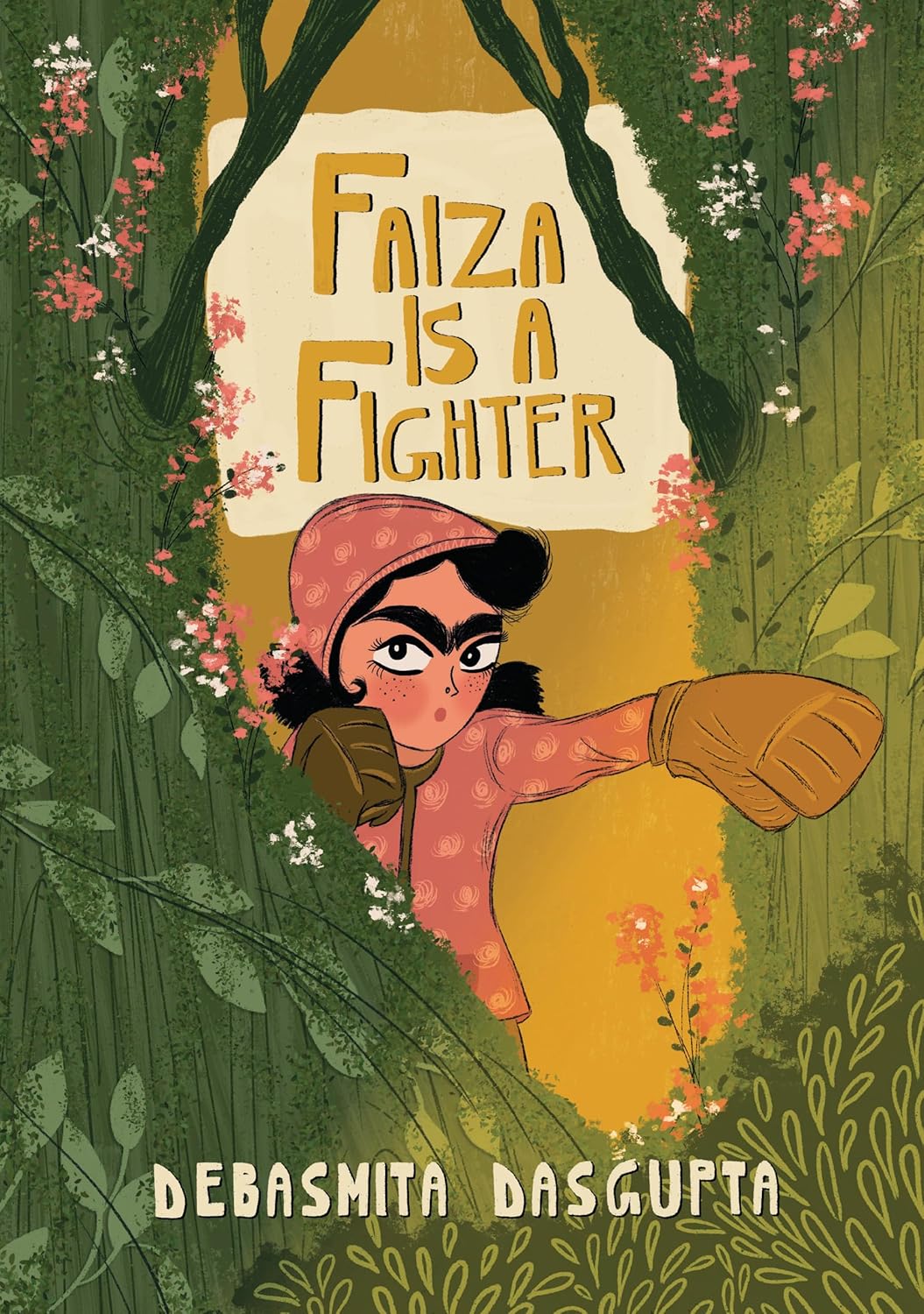 Faiza is a Fighter
Faiza is a Fighter
Writer/artist: Debasmita Dasgupta
Soaring Kite Books
Publisher’s rating: Grade 4-Grade 8
The name “Faiza”, according to the little glossary on the inside front cover of Debasmita Dasgupta’s graphic novel Faiza is a Fighter, is derived from Arabic, and it means “winner.” The protagonist certainly seems to earn her name, as the relatively short 72-page book is devoted to her many struggles, both those in pursuit of her dream of being a boxer and those that involve just trying to get through each new day, struggles she ultimately overcomes…regardless of if she wins a particular match or not.
Faiza is a lonely little girl growing up in the steep hills of a remote region of northern India. Her mother passed away when she was still a baby, her beloved father seems to leave for long periods of time for work, and she has no friends among the petty bullies of her village’s public school. She thus spends most of her time with her daadi/grandmother.
SCROLL TO KEEP READING THIS POST
Faiza does have a goal though, one that drives her, and helps further bond her to her father. In the opening panels of the second chapter, set during “A day in the past” and colored in nostalgic sepia tones to denote that it’s a flashback, we see Faiza and her father looking at a newspaper.
“Wow…Mary is so amazing,” Faiza says, her hand on the paper. “I wish I could be just like her.”
“You can be like her,” her father replies. “You have to put in lots and lots of hard work and just keep trying.”
Mary is, as we see in the next panel, which is filled by a front-page story, Mary Kom, a boxer (who, if you’re wondering, is very real, very accomplished, and now very famous). “Magnificent Mary creates history with sixth world title,” the headline reads, and below it is a picture of a woman with boxing gloves held up in a fighting posture.
And so Faiza regularly trains with her father, and, upon receiving a pair of boxing gloves for her birthday, declares them the “Best birthday gift ever!” Together, the pair have developed an inspirational, question and answer dialogue:
Who are you?
I am a fighter.
What will never go away?
My fighting spirit.
If you fail?
I will try.
And so on, ending with, “Fight, Faiza, fight!”
We see her go through her biggest challenge after a terrible rainstorm that occurs while her father is away. There’s a massive landslide that strike his truck, and though he’s uninjured, he’s unable to return home for a long, indeterminate amount of time. And this after Faiza has seen an announcement in the paper for a boxing tournament for children aged seven to nine in the region.
She takes the news and father’s absence quite hard, eventually throwing her gloves in the fire and running away. Atop a mountain, she meets another Faiza, a supernatural encounter during which she learns where her name came from. Inspired, she returns home and, eventually, travels to town without her father to compete in the tournament.
Though she doesn’t win, she fights, and that is enough.
“We want to offer you a spot in our national sports academy,” a man at the tournament tells her after her match. “Your grit and determination have earned you a scholarship. You could be a really good fighter.”
SCROLL TO KEEP READING THIS POST
Dasgupta’s resume contains both picture books and a 2019 graphic novel, Nadya. Her experience with the former is quite evident in Faiza, a big, 7.9-by 10.8-inch, album-sized book with several big, painterly single- or double-page splashes establishing location images or key moments in the drama, and many pages devoted only to a few big panels.
Her brilliantly colorful art, rendered in a careful, considered palette, is flat, with simple, exaggerated character designs. Faiza herself has a big head and is seemingly all eyes, surrounded by prominent lashes, eyebrows, and freckles, her emotions easy to read in their expressions.
After the story, which ends with another expansive double-page splash, this one showing Faiza and her father driving toward the horizon of a beautiful landscape in bloom and the words “The End” in a hovering narration box, there is a two-page “Making of” section. Here Dasgupta shares some of her process work, including alternate designs for Faiza and the steps that went into each page, including penciling, inking, coloring and lettering.

With relatively few words, Dasgupta is still able to tell a compelling story, with conflicts both strongly articulated and more subtly intimated. It’s a story that should prove inspirational to any reader, whether they are engaged in some sort of athletic competition or merely trying to make it through their day.
Everyone needs to be reminded to fight, after all.
“If you fall?” her father asks Faiza. “I will rise,” she answers.
Good advice, no matter the context.
Filed under: Reviews


